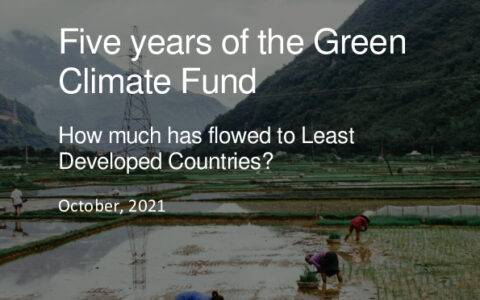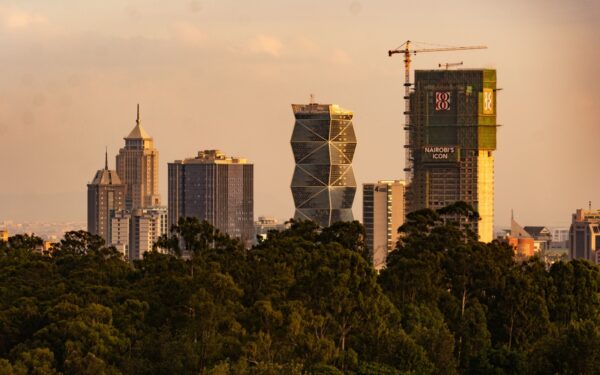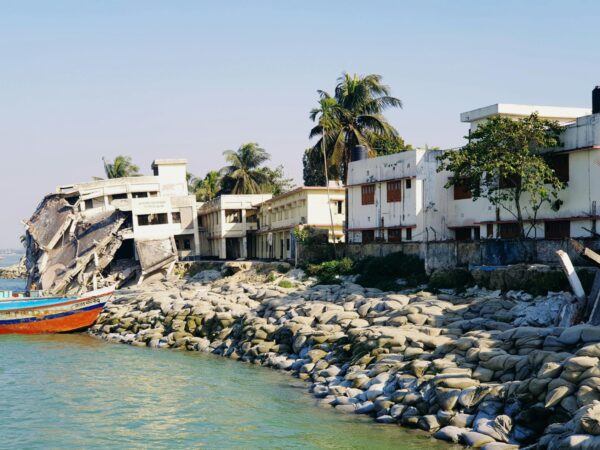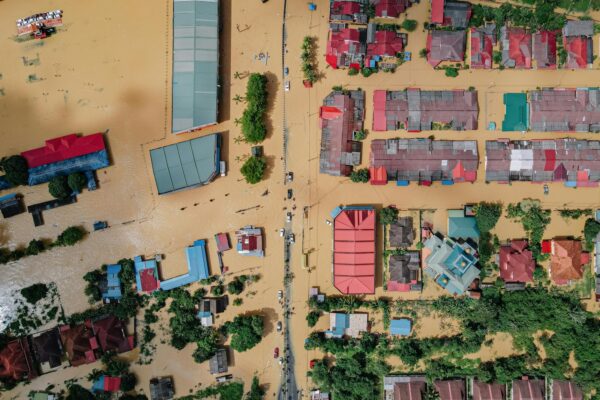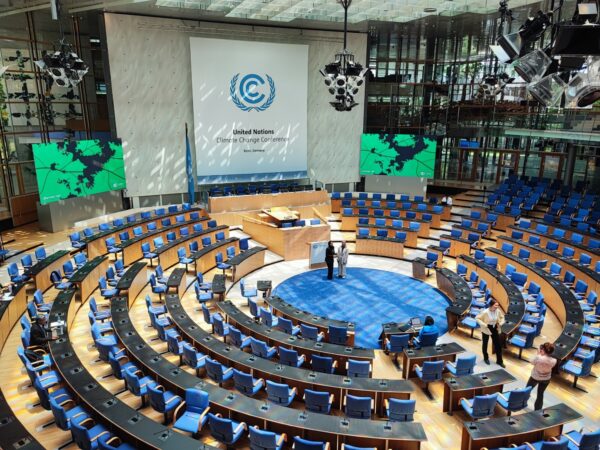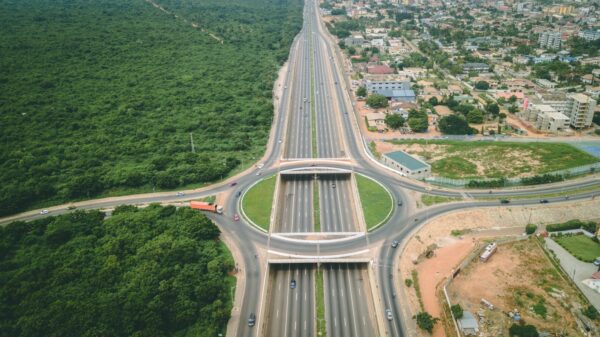Five years of the Green Climate Fund: how much has flowed to Least Developed Countries?
Authors
Komna Djabare, Kouassigan Tovivo, Koffi Koumassi
Share
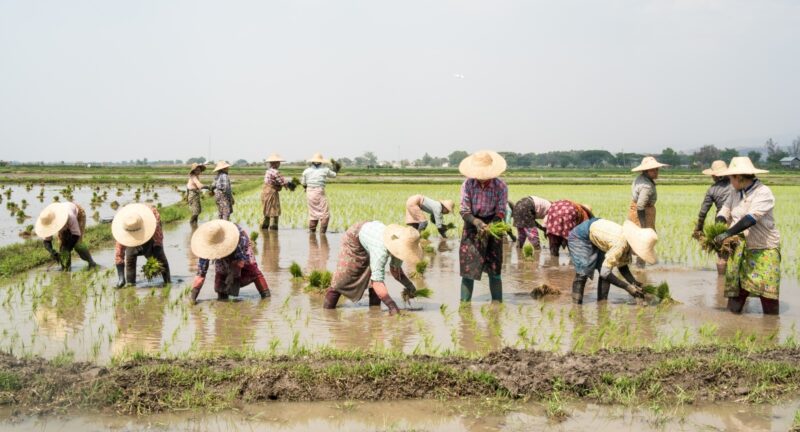
Meeting countries’ climate goals is increasingly becoming a matter of fundamental concern for many countries. Especially for the most vulnerable countries, meeting global mitigation targets to limit the increase in global warming to below 1.5 degrees above pre-industrial levels is a matter of survival because of their limited financial, technical, technological and human capacity to cope with increasing and more frequent climate-related adverse events. In addition, the need for these countries to prepare their response to build resilience and reduce their vulnerability to the adverse effects of climate change faces a major challenge – finding the means to finance climate action.
The health crisis caused by the COVID-19 shook the economy of the Least Developed Countries (LDCs) to the core, further limiting their capacity to finance climate action, thus accentuating the need for support for the development and implementation of adaptation and mitigation projects. In the current context where countries are in the process of finalising the revision of their Nationally Determined Contributions (NDCs) to set new targets, it is imperative to understand the current state of finance mobilisation by LDCs in order to anticipate the improvements to be made as well as the means to be deployed to allow sustainable, predictable and proportional financing to the needs of these countries for the achievement of the climate plans.
This analysis is conducted within the framework of the implementation of the IMPACT project and takes stock of the resources mobilised through funding proposals submitted to and approved by the Green Climate Fund (GCF) over the period from November 2015 to July 2021 (Board 29). It is based on data published by the GCF. The methodology of the analysis excludes preparatory support projects (Readiness) and considers all projects submitted by LDCs to the GCF through both the standard funding proposal process and the simplified approval process (SAP), and takes into account national projects at the individual country level as well as multi-country or regional projects that include at least one LDC. It is part of a series of analyses of which findings will be published in the form of reports or briefings, the main ones of which will show for example (i) the analysis of the portfolio of LDC projects approved by the GCF and (ii) the analysis of the “success factors” of approved projects for LDCs with the aim of contributing to identify and share best practices for better mobilisation of climate finance for LDCs.
Overview of approved funding for LDCs
- A total of 69 projects were approved by the GCF for LDCs out of a total of 177, representing 39% of the Fund’s approval portfolio. These projects are made up of 30 adaptation projects, 21 mitigation projects and 18 cross-cutting projects. 39 of the 69 projects are currently under implementation, representing a rate of 56.5%. At the territorial level, 47 of these projects are national, while 22 are multi-country projects including at least one LDC. These projects correspond to a total funding volume of USD 2.54 billion out of a total of USD 8.8 billion approved by the GCF, i.e. a funding rate of 29% for the LDCs. This amount also represents an average USD 2.04 per capita across all LDCs. Total co-financing for these projects amounts to USD 4.9 billion.
- In terms of disaggregation by public/private sectors, in nominal terms, out of the 69 projects approved up to July 2021, 51 are from the public sector, i.e. 74.6% and only 18 projects are from the private sector, i.e. 25.4%. In terms of the Target Area of the GCF, out of 30 approved adaptation projects, 29 are from the public sector, i.e. 96.6%, and only 1 project is from the private sector. Conversely, the private sector is more represented in the area of mitigation with 12 projects out of 21 approved, i.e. 57%. In the field of cross-cutting projects, the public sector is represented with 72% (13 projects out of 18).
- In terms of financial instruments, grants and loans were the most commonly used instruments in the demand for funds with 44% and 42% of funding respectively. Equity, guarantees and performance-based payments were the least used instruments.
Sectoral trends
- The financial flows from the GCF to the LDCs have been directed more towards mitigation funding which totaled 53% of the funds, higher than the representation rate of the “mitigation” area in the overall GCF funding, which is about 49%. Mitigation funding is followed by cross-cutting projects, which have mobilised 25% of the LDCs’ funding envelope, and finally adaptation, which accounts for 21% of the funding approved for LDCs. Although the overall funding of the GCF reflects more or less the same reality, the gap is much higher when it comes to LDCs where funds for mitigation are more than the double of the funds allocated to adaptation. This seems less consistent with the needs of LDCs, considering that they are classified as highly vulnerable to climate change not only because of their high dependence on primary resources but also because of their low financial, technical and technological capacities to overcome/resist climate shocks (floods, droughts, etc.). Efforts to balance the allocation of climate funds more equally between mitigation and adaptation activities, especially for LDCs, should be strengthened.
- Projects in the Agriculture, Forestry and Other Land Use (AFOLU) sector, including water resources management, ranked first with 45 projects out of a total of 69. Within the AFOLU sector, agriculture was the dominant sub-sector with 34 projects, followed by ecosystems and forests with 11 projects. The water resources sub-sector is represented in both of the above sub-sectors. Livestock and coastal protection were poorly represented. Each is found in 2 projects. The AFOLU sector is followed by the energy sector with 21 projects involved. These energy projects take into account energy efficiency in buildings. In third place are the coastal zone sectors (2 projects) and then the industry sector which was considered in 1 project. However, in terms of financial envelope mobilised, the energy sector projects mobilised the largest, i.e. around 50% and the AFOLU sector projects mobilised 41% of the overall envelope.
National and multi-country scope of projects
- National projects dominated in terms of number and volume of funding mobilised by LDCs. 47 national projects were approved mobilising about USD 1.73 billion or 68% of the approved funding for LDCs. The funding mobilised by LDCs through the 22 multi-country projects is about USD 0.81 billion, or 30% of the total GCF funding approved for LDCs (USD 2.54 billion up to July 2021). Conversely, co-financing mobilised by LDCs through multi-country projects represents USD 3.56 billion or 73% of the total financing mobilised, against USD 1.33 billion mobilised through national projects or 27% despite their nominal importance in the GCF project portfolio. In other words, multinational projects received more co-financing than national projects. The low share of co-financing in national projects indicates the difficulty of LDCs to mobilise domestic or internal funds to support climate action. Most adaptation projects were submitted as national projects (25 out of 30 projects) and mobilised about USD 0.63 billion from the GCF, out of a total funding of USD 2.54 billion. In the area of mitigation, national projects (9 out of 21) have mobilised USD 0.56 billion from the GCF for GHG emission reductions. As for cross-cutting projects, those with a national scope mobilised USD 0.54 billion from the GCF. In all, 58% of the funding approved for LDCs was mobilised through national projects.
- It should be noted that co-financing has been mobilised more through multi-country projects and especially through mitigation projects, i.e. more than ¾ of the co-financing mobilised by the LDCs.
Mobilisation by type of accredited entity, approval period and disbursement trend.
- The field of climate finance mobilisation for LDCs is dominated by international access accredited entities (AEs). Out of 57 national direct access entities accredited by the GCF, only 14 are from LDCs, or about 25%. This means that many of the 46 LDCs still do not have a direct access entity at the national level. Moreover, out of these 14 national direct access AEs, only 5 have managed to get 5 projects (1 per AE) approved at the GCF level. The amount mobilised by national entities from the GCF is USD 0.352 billion out of USD 2.54 billion approved, i.e. 14%. In addition, most LDC direct access entities are accredited for micro and small projects, and only 5 are accredited for medium projects, and none are accredited for large projects. This significantly limits the volume of funding that LDC direct access entities can mobilise, and demonstrates their limited technical and operational capacity to enter the climate finance market. Strategic thinking for LDC accreditation decisions is required: would it be strategically more advantageous for an LDC to invest in accreditation for micro and small projects of several national entities or would it be more astute to invest in building the technical and fiduciary capacity, environmental and social standards of an already accredited entity to enable it to position itself for accreditation for larger projects at the time of its accreditation review?
- The LDC project approval time is quite long, with a median line of 619 days or 21 months. This could represent an average of 6 to 7 rounds of reviews of the funding proposal at the GCF Secretariat and/or ITAP level, given that submission is made quarterly in accordance with the GCF project submission schedule. The shortest approval time for LDC projects was 113 days (about 4 months) and the longest was 1727 days, or 58 months. In terms of area, adaptation projects had the longest average time of 22 months compared to 20 months for mitigation and cross-cutting projects. These timeframes do not include project preparation time which can vary from 6 months to more than a year depending on the type of project, the capacity of the accredited entity to conduct the process, the responsiveness of the GCF focal point or the GCF National Designated Authority (NDA) in providing information, data and/or advice to the accredited entity, etc.
- Although the approval time is already long, disbursement after approval appears to be slow. Over the period covered by the analysis, about USD 0.23 billion has been disbursed, or less than 9% of the total amount approved by the Green Climate Fund for the LDCs, after 5.5 years of operation. Only 4 projects had disbursed more than 50% of their total approved budget as of the 29th Board meeting, while 30 projects had not yet recorded their first disbursement. The rest of the projects had a disbursement rate between 1 and 50%. At the level of the overall GCF portfolio itself, disbursement is at 22% or a total of USD 1.9 billion out of the approved USD 8.8 billion, which is still low. At this pace, which combines an inherently complex project proposal preparation phase, a lengthy approval period and a slow first disbursement, will LDCs be able to implement the climate actions proposed in their current NDCs and those being prepared through the review process underway in some countries and already closed in others? And once the projects are implemented, will the objectives be achieved as initially planned, perhaps despite of changes in various aspects of the initial climate problem targeted, between the identification of the problem and the time taken to implement the interventions?
All in all, this current situation requires improvements on both sides of the process for the implementation of projects contributing to the achievement of strategic climate objectives, as they do not currently make it possible to respond to the climate emergency. In view of these various results, the analysis made suggestions for improving the mobilisation of climate finance by LDCs. Further studies, such as the analysis of “success factors” and the development of self-monitoring tools for the quality of project proposals, are envisaged by Climate Analytics to support these suggestions and contribute to building the capacity of LDCs to effectively mobilised climate finance.
